86 F. high in the Twin Cities Sunday.
79 F. average high for June 16.
83 F. high on June 16, 2012.
.01" rain fell at KMSP yesterday.
Spotty PM T-shower late today and Tuesday; better chance of T-storms by Wednesday.
65-70 F. dew points by next weekend?
Father's Day Tan Line
I got the one thing I wanted most yesterday:
family togetherness. That, and a sudden (reckless) dose of sunny Vitamin
D. I also received a friendly lecture out on the lake. "2012 was the
earliest we got our dock and boat in the water - this year was the
latest since we moved here a generation ago. How do you explain THAT Mr.
Weatherman?"
People want a tidy 8 second TV soundbite
explanation, when the reality of what's happening is impossibly complex.
There's a large and growing body of evidence that rapid melting/warming
in the Arctic is impacting our day to day weather patterns. We need
more data, more research, but as you might expect - everything is
interconnected.
NOAA records show much of the metro area and
southern Minnesota has picked up twice the normal amounts of rain in the
last 30 days; 3X for far southeast Minnesota. The hottest, steamiest
warm fronts are stalling over Iowa and far southern Minnesota - waves of
low pressure rippling east along a stalled tropical front.
We may miss out on 90s, but we're sure to see
more heavy T-storms by late week, maybe a severe outbreak next weekend.
Farmers are fuming about waterlogged fields. For good reason: it seems
to pour now every other day.
Rapid Changes - Temperatures Slight Above Average.
The worst of the heat stays just south of Minnesota looking out the next
week. An east-west frontal boundary may stall closer to MSP late in the
week; the ECMWF model suggests that Friday will be the wettest day in
sight, with a few scattered T-storms spilling over into the weekend. Big
surprise.
Weekend: Risk of Severe Stickiness. Models show dew
points rising as the week goes on; dew points rising into the upper 60s
to near 70 by the weekend. Humidity levels have been fairly reasonable
so far - that's about to change.
A Persistent Boundary. I'm not sure whether to feel
blessed or annoyed. 90s can't quite reach this lofty latitude, fronts
getting stuck just south of MSP, waves of low pressure rippling eastward
along that frontal boundary sparking episodes of T-storms. 84 hour NAM:
NOAA.
30 Day Rainfall Percent of Normal. Much of central
Minnesota and the immediate Twin Cities has picked up twice as much rain
as normal in the last 30 days, according to NOAA. Farms over
southeastern Minnesota have seen 2 to 3 times more rain than average
since May 15.
An Early Start To Wildfire Season. In today's edition of "
Climate Matters"
we examine wildfire trends over the western USA. Wildfire season is
now an average of 78 days longer than it was in 1970. Dry areas are
becoming even drier, and when winter snows are lighter than average it
can set the stage for a long, hot, fiery season. Such will be the case
in 2013.
The Storm, Next Time. Have we learned anything from Superstorm Sandy? Here's an excerpt of an Op-Ed in
The New York Times: "...
About
400,000 New Yorkers live in flood-prone areas. City analysts estimate
that, by the 2050s, 800,000 people will live within those areas. As Mr.
Bloomberg said of the need to start working immediately: “Whether you
believe climate change is real or not is beside the point; the bottom
line is we can’t run the risk.” The main challenge, of course, will be
finding enough money to build the walls, bulkheads, levees and other
fortifications to minimize the effects of future storms. Mr. Bloomberg
estimated that his complex plan, with 250 proposals, would cost almost
$20 billion over the next decade..." (photo: Patsy Lynch, FEMA).
You're Going To Get Wet.
The Economist
reports that Americans are building beachfront homes, even as ocean
levels continue to rise. What's the definition of insanity? Doing the
same thing over and over again, expecting different results? Better to
buy a home 5 blocks inland...and be patient. Here's an excerpt: "
Before
Hurricane Sandy tore through New York and New Jersey, it stopped in
Florida. Huge waves covered beaches, swept over Fort Lauderdale’s
concrete sea wall and spilled onto A1A, Florida’s coastal highway. A
month later another series of violent storms hit south Florida,
severely eroding Fort Lauderdale’s beaches and a chunk of A1A. Workers
are building a new sea wall, mending the highway and adding a couple
of pedestrian bridges. Beach erosion forced Fort Lauderdale to buy
sand from an inland mine in central Florida; the mine’s soft, white
sand stands out against the darker, grittier native variety. Hurricanes
and storms are nothing new for Florida. But as the oceans warm,
hurricanes are growing more intense. To make matters worse, this is
happening against a backdrop of sharply rising sea levels, turning
what has been a seasonal annoyance into an existential threat..."
Photo credit: Eyevine.
The Worst Charities: Get Information Before You Make Donation. Here's an excerpt of an eye-opening report from
Marketplace.org (which puts on a fine radio show on Public Radio, btw): ..."
The
top of our list is an organization called Kid's Wish Network. They
operate out of a metal warehouse in Holiday, Fla. Over the past decade
they've raised millions of dollars. Of that, about 80 percent -- $110
million -- has gone to professional solicitors, $4.8 million has gone
to the charity's founder and his consulting firm, and only $0.03 of
every $1 that they've raised has actually spent directly on helping
kids," says Taggart. "Most of the causes are popular causes that appeal
to donors and may sound like a more well-known group." To make sure
that you're sending your money to good places, Taggart says there are
many resources to research charities online."
The top 10 worst U.S. charities:
 See the full list
See the full list
The Most Dangerous Traffic Circle In The World? If
you have a couple of minutes, this is worth your time. How on Earth more
people don't plow into each other is beyond me. And you think 494 is
rough? Robert Krulwich from
NPR has the story (and video); here's an excerpt: "
I've
been to New Delhi where traffic is frightening. I've seen pictures of
Nairobi and Bangkok, where it's even scarier. But Ho Chi Minh City? The
town we used to call Saigon? I don't think I'd put myself in a truck,
car, bike or even a Sherman tank in that town. This video opens in the
scariest traffic circle I could imagine — actually, it's beyond
imagining — where bikes, cars and people seem simultaneously,
collectively and individually heading straight at each other (when you
look, just count the vehicles and people on collision course; there are
at least two or three in every frame). It's a metropolitan circle of
death, and yet ..."
TODAY: Sunny spells, passing shower or T-shower possible. Winds: NW 10. High: 77
MONDAY NIGHT: Evening sprinkle, then partial clearing. Low: 58
TUESDAY: More clouds than sun, risk of a stray shower. High: 76
WEDNESDAY: More sun, still pleasant. Warmer. Slight chance of late PM thunder. Wake-up: 62. High: 82
THURSDAY: Some sun, isolated T-storm, more humidity. Wake-up: 65. High: 81
FRIDAY: More numerous T-storms. Wake-up: 66. High: near 80
SATURDAY: Sticky with morning T-storms, some PM sun. Wake-up: 68. High: 84
SUNDAY: Some AM sun, PM T-storms pop. Wake-up: 69. High: 82
Climate Stories....
Climate Change Can Kill Your Investment Returns. Here's a video from Motley Fool and
DailyFinance that made me do a double-take: "
The
planet is warming up -- and you may not even realize how much of a
profound effect it can have on your portfolio. Climate change is
responsible for more extreme weather events and increasing water
scarcity, for instance, presenting profound implications for companies.
A warming planet poses significant risks -- ones that investors too
often ignore. Anheuser-Busch Inbev learned this the hard way back in
2001, as you'll hear in the following video. But it's not all downside.
Cemex is providing solutions to the climate-change challenge. The
company's products improve building efficiency, reduce carbon
footprints in the built environment, and more..."
Losing Fight With Climate Change, Locales Around The World Find Ways To Live With It. The AP and
Washington Post
has a comprehensive look at what some large cities around the world are
already doing to try and become more resilient, in the face of rising
sea level and more extreme storms. Here's an excerpt: "
From Bangkok
to Miami, cities and coastal areas across the globe are already
building or planning defenses to protect millions of people and key
infrastructure from more powerful storm surges and other effects of
global warming. Some are planning cities that will simply adapt to more
water. But climate-proofing a city or coastline is expensive, as shown
by New York Mayor Michael Bloomberg’s $20 billion plan to build
floodwalls, levees and other defenses against rising seas. The most
vulnerable places are those with the fewest resources to build such
defenses, secure their water supplies or move people to higher ground.
How to pay for such measures is a burning issue in U.N. climate talks,
which just wrapped up a session in the German city of Bonn..." (photo: AP).
Who Said Renewables Were Expensive? Here's a clip from GE Look Ahead at
The Economist: "
Thanks
to rapid cost reductions over the last four years (-80% for solar PV,
-29% for wind), renewables now becoming competitive with fossil fuels."
Global Warming Conversation Changes. We need to
reduce greenhouse gas emissions on a planetary scale, but that won't
reduce the need to adapt to this new world. Adaptation is a fact of
life, as discussed in this article at
NBC Philadelphia; here's an excerpt: "...
University
of Michigan professor Rosina Bierbaum is a presidential science
adviser who headed the adaptation section of the administration's new
National Climate Assessment. ``It's quite striking how much is going on
at the municipal level,'' Bierbaum said. ``Communities have to
operate in real time. Everybody is struggling with a climate that is
no longer the climate of the past.'' Still, Bierbaum said, ``Many of
the other developed countries have gone way ahead of us in preparing
for climate change. In many ways, the U.S. may be playing catch-up.''
Hurricanes, smaller storms and floods have been a harsh teacher for
South Florida, said Jacobs. "Each time you get walloped, you stop and
scratch your head ... and learn from it and make change,'' she said.
"It helps if you've been walloped once or twice. I think it's easier
to take action when everybody sees'' the effect of climate change and
are willing to talk about being prepared..." (photo credit: Marco Beltrametti).
How Climate Change Makes Wildfires Worse.
Mother Jones has the story - here's an excerpt: "...
Big
wildfires like Colorado's thrive in dry air, low humidity, and high
winds; climate change is going to make those conditions more frequent
over the next century. We know because it's already happening: A University of Arizona report
from 2006 found that large forest fires have occurred more often in
the western United States since the mid-1980s as spring temperatures
increased, snow melted earlier, and summers got hotter, leaving more and
drier fuels for fires to devour. Thomas Tidwell, the head of the
United States Forest Service, told a Senate committee
on energy and natural resources recently that the fire season now
lasts two months longer and destroys twice as much land as it did four
decades ago. Fires now, he said,
burn the same amount of land faster. We can expect "as much as a
fourfold increase in parts of the Sierra Nevada and California" in fire
activity across the rest of this century, says Matthew Hurteau,
assistant professor of ecosystem science and management at Pennsylvania
State University..."
Photo credit above: "
El Paso County Sheriff's Deputy Dan Cukowski helps evacuate Linda Davies and her horses during the Black Forest Fire on June 11." Jerilee Bennett/MCT/ZUMAPRESS
Climate Change Could Increase Areas At Risk Of Flooding By 45 Percent. Here's the intro to a story at
The Atlantic Cities: "
Rising
seas and increasingly severe weather are expected to increase the
areas of the U.S. at risk of floods by up to 45 percent by 2100,
according to a first-of-its-kind report released by the Federal Emergency Management Agency on Wednesday.
These changes could double the number of flood-prone properties
covered by the National Flood Insurance Program and drastically
increase the costs of floods, the report finds. The report concludes
that climate change is likely to expand vastly the size and costs of
the 45-year-old government flood insurance program. Like previous
government reports, it anticipates that sea levels will rise an average of four feet
by the end of the century. But this is what's new: The portion of the
US at risk for flooding, including coastal regions and areas along
rivers, will grow between 40 and 45 percent by the end of the century.
That shift will hammer the flood insurance program. Premiums paid into
the program totaled $3.2 billion in 2009, but that figure could grow
to $5.4 billion by 2040 and up to $11.2 billion by the year 2100, the
report found. The 257-page study has been in the works for nearly five
years and was finally released by FEMA after multiple inquiries from
Climate Desk and Mother Jones..." (photo credit: Reuters).
Map: Places That Will Flood More Often Due To Global Warming.
Slate has the story - here's an excerpt: "...
The
FEMA study is based on the assumption that sea levels will go up by 4
feet in the next 86 years. But a report released last year by the
National Oceanic and Atmospheric Administration noted that sea level
rise could be more than 6 feet.
Whether it's 4 feet or 6 feet, rising seas cause shoreline erosion
and recession, and create greater surge risk in the event of major
storms. The FEMA report also notes that flooding around rivers will
likely become worse in a warming world, due to changes in
precipitation frequency and intensity. Population growth, which causes
increases in paved areas and changes in runoff patterns and drainage
systems, will affect the amount of flooding from rivers..."
* the PDF report referenced above is
here.




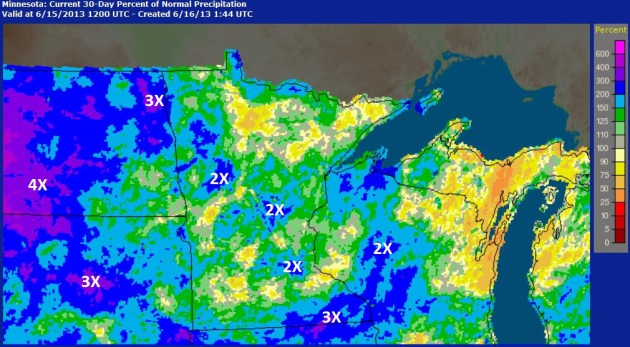
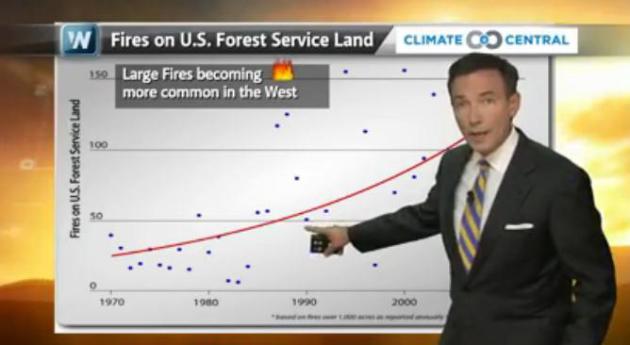
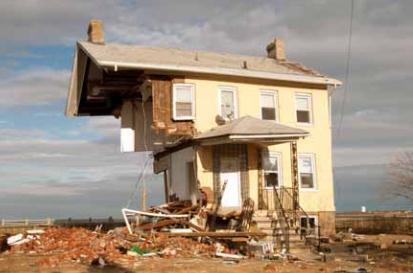

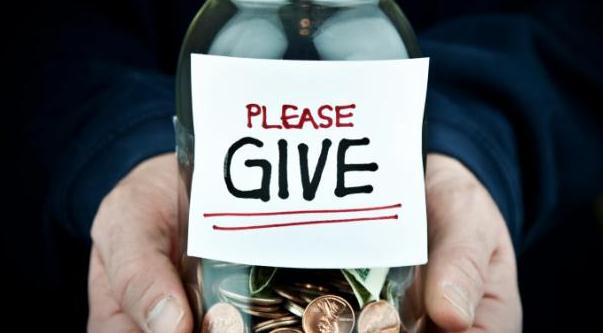


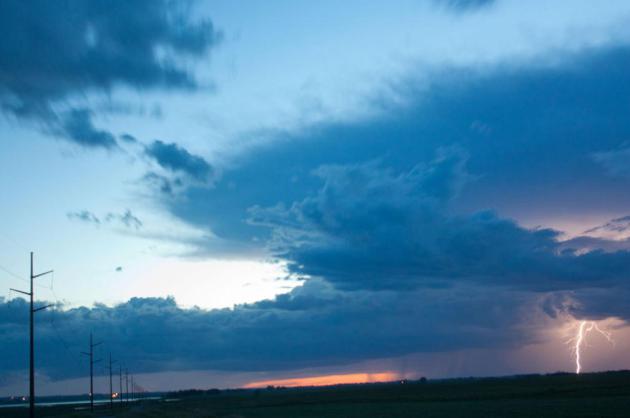

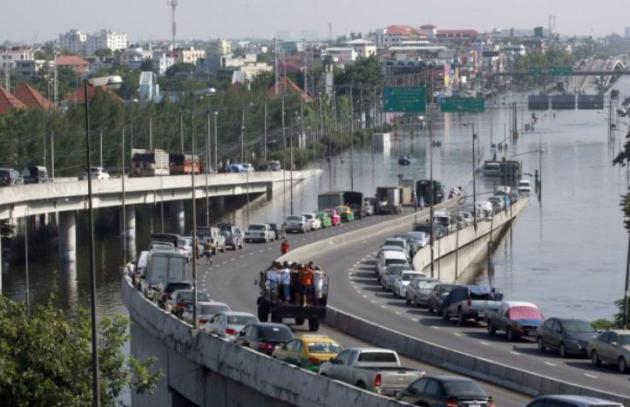


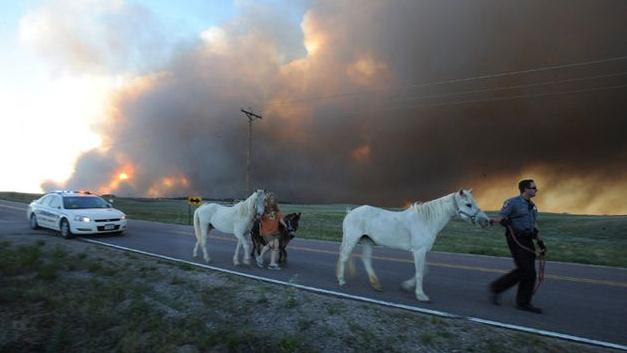
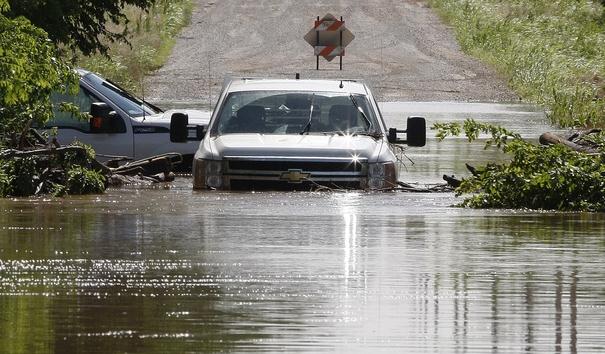
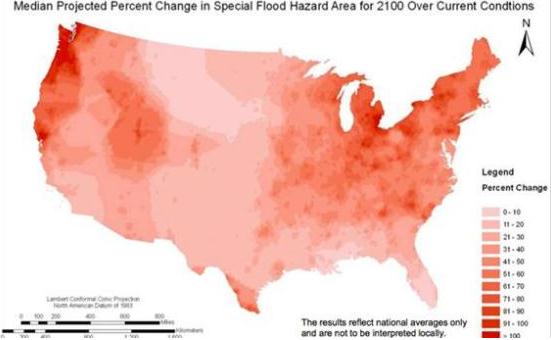
No comments:
Post a Comment